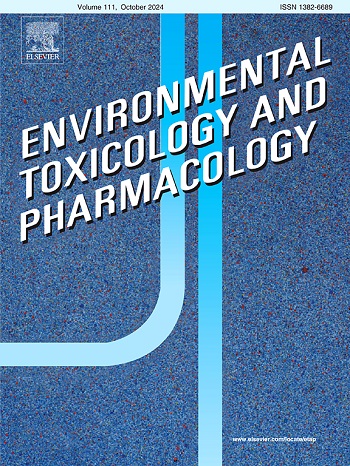Comprehensive tetracycline, ciprofloxacin and sulfamethoxazole toxicity evaluation to earthworm Dendrobaena veneta through life-cycle, behavioral and biochemical parameters
IF 4.2
3区 环境科学与生态学
Q2 ENVIRONMENTAL SCIENCES
引用次数: 0
Abstract
Veterinary antibiotics are widely spread in the environment, however, the knowledge about their impact on soil key species is still limited. This study evaluated the short-term and long-term effects of tetracycline (TC), ciprofloxacin (CIP) and sulfamethoxazole (SMX) (1–500 mg kg) on earthworm Dendrobaena veneta by measuring multiple parameters (survival, growth, reproduction, behavior and biochemical responses). Neither antibiotic induced acute toxicity and low mortality was observed after chronic exposure. TC and CIP had a negligible effect on the earthworm’s weight from the 6th week of exposure, SMX inhibited the earthworm growth when was present in the range of 50–500 mg kg−1. In parallel, SMX reduced earthworm reproduction at environmentally relevant concentrations. Antibiotics altered superoxide dismutase (SOD), catalase (CAT), glutathione reductase (GR) and gluthathione-S-transferase (GST) activities and induced lipid peroxidation. Overall, earthworms showed no apparent acute response at environmentally relevant concentrations except for avoidance behavior; after long-term exposure earthworms experienced biochemical, physiological, and reproductive impairments and reduced survival at high soil contamination.
四环素、环丙沙星、磺胺甲恶唑对蚯蚓生命周期、行为及生化指标的综合毒性评价
兽药抗生素在环境中广泛传播,但对其对土壤关键物种影响的认识仍然有限。本研究通过对四环素(TC)、环丙沙星(CIP)和磺胺甲恶唑(SMX) (1-500mgkg-1)对蚯蚓(Dendrobaena veneta)的生存、生长、繁殖、行为和生化反应等多项指标的测量,评估了其短期和长期的影响。慢性暴露后,没有观察到抗生素引起急性毒性和低死亡率。从接触第6周开始,TC和CIP对蚯蚓体重的影响可以忽略不计,SMX在50-500mg -1范围内对蚯蚓生长有抑制作用。同时,SMX在与环境相关的浓度下减少了蚯蚓的繁殖。抗生素改变超氧化物歧化酶(SOD)、过氧化氢酶(CAT)、谷胱甘肽还原酶(GR)和谷胱甘肽s -转移酶(GST)活性,诱导脂质过氧化。总体而言,蚯蚓在环境相关浓度下没有表现出明显的急性反应,除了回避行为;长期暴露于高污染土壤后,蚯蚓经历了生化、生理和生殖障碍,并降低了存活率。
本文章由计算机程序翻译,如有差异,请以英文原文为准。
求助全文
约1分钟内获得全文
求助全文
来源期刊
CiteScore
7.00
自引率
4.70%
发文量
185
审稿时长
34 days
期刊介绍:
Environmental Toxicology and Pharmacology publishes the results of studies concerning toxic and pharmacological effects of (human and veterinary) drugs and of environmental contaminants in animals and man.
Areas of special interest are: molecular mechanisms of toxicity, biotransformation and toxicokinetics (including toxicokinetic modelling), molecular, biochemical and physiological mechanisms explaining differences in sensitivity between species and individuals, the characterisation of pathophysiological models and mechanisms involved in the development of effects and the identification of biological markers that can be used to study exposure and effects in man and animals.
In addition to full length papers, short communications, full-length reviews and mini-reviews, Environmental Toxicology and Pharmacology will publish in depth assessments of special problem areas. The latter publications may exceed the length of a full length paper three to fourfold. A basic requirement is that the assessments are made under the auspices of international groups of leading experts in the fields concerned. The information examined may either consist of data that were already published, or of new data that were obtained within the framework of collaborative research programmes. Provision is also made for the acceptance of minireviews on (classes of) compounds, toxicities or mechanisms, debating recent advances in rapidly developing fields that fall within the scope of the journal.

 求助内容:
求助内容: 应助结果提醒方式:
应助结果提醒方式:


